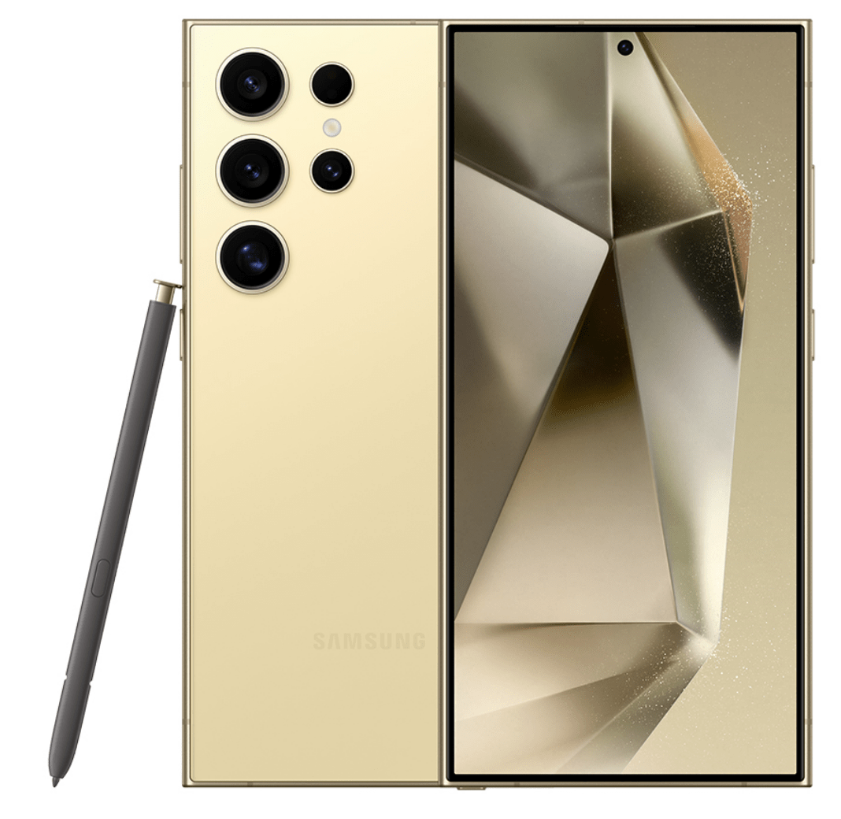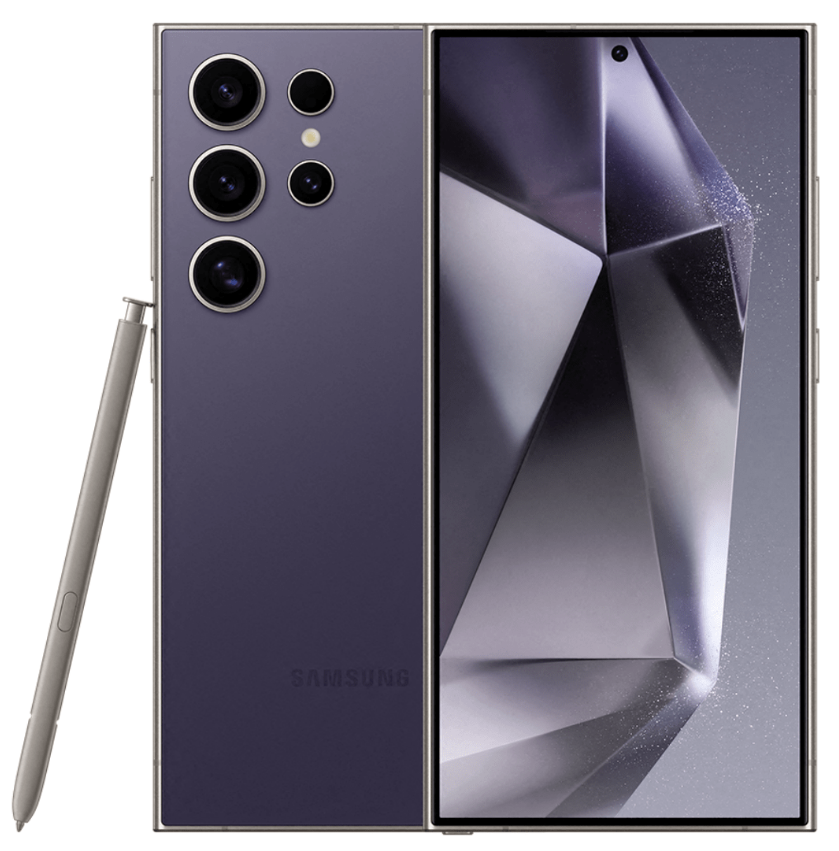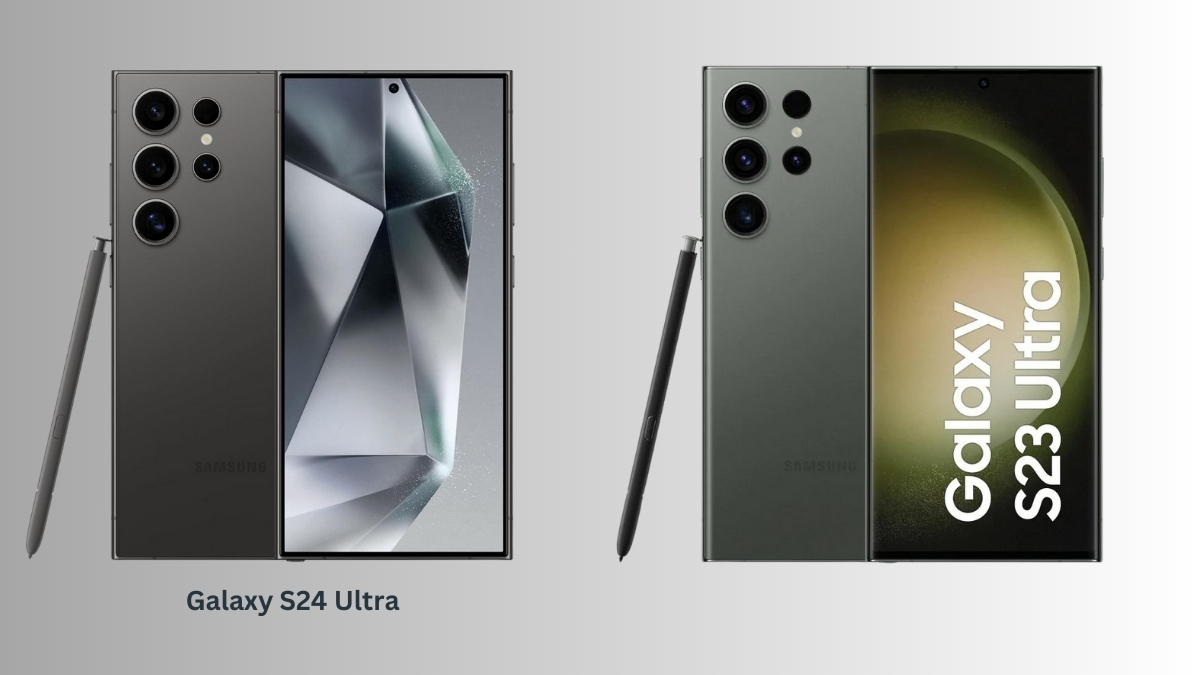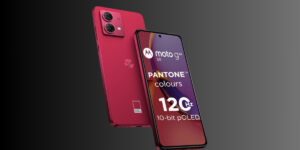The Samsung Galaxy S23 Ultra is Samsung’s near-perfect flagship phone, addressing most key weaknesses of its predecessor. The phone’s Snapdragon 8 Gen 2 SOC brings tremendous improvements, and the critical reception of the overall experience is mostly positive.
Since the 8 Gen 2 uses TSMC’s 4nm fabrication, the S23 Ultra has class-leading efficiency. It doesn’t suffer from heating or throttling, and the battery life is among the best flagships of this year. The only major remaining complaints are with the cameras. The camera hardware for intermediate zoom is still underwhelming, resulting in poor noise control and lackluster bokeh.
Leaks on the internet say that the S24 Ultra will finally fix this weakness, and the S24 Ultra’s camera system will eventually have great zoom even at the intermediate 3 to 10X focal lengths. Six months into the launch of the S23 Ultra, there aren’t any major issues with Quality Control, and it’s still a top recommendation for a high-end Android flagship.
This article will provide an on-paper comparison between the S23 Ultra and the upcoming S24 Ultra. However, this comparison uses early leaks as a reference point and is not an official spec comparison. It’s only what we know now, and the launch of the S24 Ultra is around six months away. Other leaks will begin a few months later, and we’ll update the post accordingly.
Expected specs of the S24 Ultra
- 200MP (HP2, main)+ 50MP (3X telephoto)+ 10MP (10X periscope)+ 12MP (ultra wide).
- 12MP front camera.
- Exynos 2400/ 8 Gen 3 SOC.
- 5000 mAh battery and 45W charging.
- 120Hz/ 144Hz 1440P AMOLED HDR10+ LTPO display.
- Titanium frame, similar weight.
- OneUI 6.1/ Android 14 out of the box.

With smartphones rapidly approaching a plateau in innovation, companies aren’t going to revolutionize the industry with new tech, and the S24 Ultra will focus on iterative improvements to the overall experience. The last major spec bump we saw was the Galaxy S20 Ultra; every version has been an iteration since then.
According to the rumors, the S24 Ultra will get a significant update to the display. The panel will have a higher peak brightness and mostly match Apple. There’s not much information about bezel size yet, but we expect it to retain the boxy Note design.
The rest of the specs will remain standard, with a 120Hz 1440P LTPO AMOLED display, probably 2000 Nits of brightness, and HDR10+ support.
Since Samsung uses the same sensor and tunes it better over the years, we can expect the S24 Ultra to stick with the 200MP HP2 sensor. New rumors point to major improvements to the sensor behind the 3X lens. It’s a larger 1/2.52″ 50MP sensor.
Samsung could, however, split the chipsets again and use the Exynos 2400 in some markets. Then, it depends on how the Exynos performs, and Exynos chips were never amazing in efficiency and heat control, especially since they come from the Samsung foundry.
Finally, there are rumors that Samsung moving to a Titanium frame will massively assist durability. The Ultra model might even get satellite connectivity. Despite the new frame, there’s apparently no difference in the weight.
S24 Ultra vs S23 Ultra: Display
- Better color accuracy and gradient separation, and probably better HDR tuning.
- Higher peak brightness.
- Potential 144Hz refresh rate.
- New LTPO technology and better efficiency on the S24 Ultra.
The S23 Ultra’s Samsung panel isn’t the best panel that Samsung makes. We can’t categorize it as an M11 panel but not an M12 panel. Fortunately, rumor has it that the S24 Ultra will move to M13, the best available AMOLED panel from Samsung. Apple currently has Samsung’s best panels for the iPhone 14 Pro/ Max models, which are also produced in much higher volume.
The S23 Ultra has a better reproduction of Reds and Greens than the S22 Ultra, thanks to better emitters. But it doesn’t change anything with the emission of the Blue color. The overall wavelength changes remain negligible, so you can’t tell the difference. The maximum color gamut isn’t different, either. Some reviews state a slight blue shift at some angles, and the S24 Ultra could improve that.
One complaint with the S23 Ultra was HDR headroom and the highlight control with max brightness content. There’s also slight gradient bending, probably due to using a native 8-bit panel. This doesn’t mean Samsung should immediately move to a 10-bit panel, but at least emulating it better with dithering like Apple does can go a long way. Unfortunately, there isn’t much information on whether Samsung will move to a native 10-bit panel.
The efficiency of the S23 Ultra’s display is already excellent, and new material will push it forward. The array of Red and Green stacks is new for the S23 Ultra, but Samsung reused the Blue stack. We can assume the S24 Ultra will upgrade all the display stacks and improve the overall color rendition.
Refresh rate & PWM dimming
There were leaks a while ago that the phone could have a 144Hz refresh rate, but we haven’t seen more information about that. There’s also a debate on whether the difference between 120Hz and 144Hz is perceptible to the human eye, but the general consensus is that the scrolling is a bit smoother, and games that support it get higher frame rates. While it’s overkill for some, we have to remember that an Ultra flagship is all about having extra features.
Another major issue is the PWM dimming. The PWM of the S23 Ultra is at 240Hz, which is really low. PWM referees to AMOLED flickering, and all displays have it. Many people feel eye strain or headaches, especially in low ambient light, when using displays with low PWM. Turning off the 120Hz refresh rate helps a bit, but this isn’t an ideal solution. It also improves color accuracy in low light. We hope Samsung addresses this issue with the S24 Ultra, though we don’t have any concrete rumors to back this up.
Performance
- DEPENDING ON YOUR REGION, the S24 Ultra could have the Exynos 2400 (Samsung 3nm) or the 8 Gen 3 (TSMC 4nm).
- It isn’t easy to conclude, but we expect the overall improvements to be minor over the S23 Ultra.
- The latest models could have 12GB of RAM on the base model.
The S23 Ultra currently ships with the Snapdragon 8 Gen 2 for Galaxy chip, and it has slightly higher clock speeds for theoretically higher peak performance. Unfortunately, Samsung’s GOS limits performance regardless, and this clock speed doesn’t make a difference in actual use except for the CPU scoring higher in benchmarks.
The S24 Ultra, according to rumors, will have two different chips again, depending on your region. Some regions could get the Exynos 2400 SOC, while others could get the Snapdragon 8 Gen 3 SOC.
The 8 Gen 3 will stick with TSMC’s 4nm processing, though the node could be more advanced. This will bring slight efficiency gains. The other variant will feature Samsung’s in-house Exynos 2400 SOC, which will use Samsnug’s 3nm GAN fabrication.
TSMC isn’t moving to 3nm with the 8 Gen 3; they’re waiting for the 8 Gen 4 to do so. If this pans out well, then Samsung’s 3nm chip has a good chance of beating Qualcomm’s offering. According to the current reports, Samsung has an edge with yield rate over TSMC.
TSMC’s yield is currently about 55% (estimate), and it’s 60% for Samsung. Better yield does not equal a better chip, so we can’t make any conclusions about performance until the device comes out. However, given the previous track record of Exynos chips, we can only stay cautiously optimistic about this. We don’t want another situation where some regions get a good chip and others get a worse one.
Battery, RAM & Charging
Both the S23 and 24 Ultra will probably stick to a 5000 mAh battery and the same 45W charging. We don’t expect any major difference in battery life, and the battery on the current model is already fantastic. The new chips could offer slight efficiency improvements for a slightly better overall result, but nothing as drastic as the move from the S22 Ultra to the S23 Ultra.
The S23 Ultra currently starts at 8GB of RAM and 128GB of internal storage in many countries. Samsung will allegedly change this to 12GB of RAM on the base model and 256GB of storage. It’s unclear whether or not Samsung will increase the price. The 8GB RAM variants have many issues, like the suspension of background apps and notification delays.
Cameras
- The new 50MP 1/2.52″ 3X telephoto will massively improve intermediate zoom between 3X and 10X, and it’ll handle many scenes in low light better than the S23 Ultra.
- Portrait mode photos at 3X will look much better than the S23 Ultra.
- The HP2 sensor will be tuned better for better overall colors and noise control.
- General imagery improvements from a new and more advanced SOC (8 Gen 3/ Exynos 2400).
Primary camera
Samsung usually sticks to the same primary sensor for two or even three years, and we expect the 200MP HP2 to stick around. The S20 Ultra, S21 Ultra, and S22 Ultra all had the same 108MP 1/1.33″ HM3 sensor. We assume that Samsung didn’t fully use the HP2 sensor, and they’ll unleash its full potential with the S24 Ultra.
While the S23 Ultra is one of the most versatile camera setups on a smartphone with the industry’s best long-range zoom, it isn’t free of flaws. Photos from the primary camera occasionally look noisy, especially as the light falls.
A higher megapixel count is beneficial for retaining details when you zoom into an image, but it reduces the individual pixel size. 1/1.3″ isn’t a large sensor, considering we have 1″ sensors. The output in low light suffers, with noisy skies and aggressive smoothening to compensate. Samsung could fix a lot of this if they optimize the HP2 better.
Since Samsung prioritizes maintaining a design language instead of moving to a 1″ sensor, they’re attempting to compensate with software and more megapixels. 1″ sensors also suffer from focus plane problems, which Samsung probably wants to avoid.
We also expect video quality to improve, better color routing, and the general improvement we get with a new ISP.
3X telephoto
The 3X telephoto is currently the weakest camera on the S23 Ultra. It has a tiny 1/3.52″ 10MP telephoto, which is thankfully changing with the S24 Ultra. The 3X sensor on the S24 Ultra is apparently going to get a major upgrade, and it finally matches the 3X sensor size of most of the competition. This ultimately leaves Apple’s 12MP 1/3.5″ sensor in the dust and is pretty much the same size as Xiaomi’s 1/2.51″ 3X sensor on the 13 Ultra.
It isn’t as good as Oppo’s 3X 1/1.56″ IMX890, but that’s Oppo’s only solution, while Samsung uses two lenses to achieve much better long-range magnification. We don’t have the lens aperture values yet, but the sensor size is already a major upgrade.
The S23 Ultra’s 3X telephoto output is often noisy, even in good lighting. It performs exceptionally poorly in low light, and the new sensor will change that. Despite weak hardware, Samsung’s software is outstanding, so portrait photos are class-leading. A better sensor will probably put Samsung’s portrait photos at the top.
Portrait photos are best taken around the 50-mm and 85-mm focal length, and the 3X range is also great for product shots. This will take Samsung’s versatility further since it also improves the quality of photos between 3X and 10X. This explains why earlier rumors mentioned that the phone would have a new 5X sensor. It’s just that the quality of 5X photos will improve.
Design
All we know about the design is that the phone will have a new titanium frame. While titanium is more durable and feels more premium, it’s typically much heavier. However, a report claims that the weight will remain the same as the S23 Ultra despite changing to a different frame material.
The S22 Ultra has an Aluminum frame, while Apple’s top-end phone has a stainless steel frame- which is more durable. The iPhone 15 Pro/ Max and the S23 Ultra will now feature titanium frames, which seems to be the new trend for ultra flagship phones.
Samsung has recently hired a famous car designer, Rubert H. Lee, and leakers expect his first design collab to be the S24 Ultra. Since the S23 Ultra’s design was nearly identical to the S22 Ultra, we hope to see a redesign of the camera module this time.

Software
Nothing will separate the two here, but the S24 Ultra will get an extra year of updates. The S24 Ultra will ship with Android 14 (One UI 6 or 6.1) out-of-the-box, and the S23 Ultra get One UI 6.1 via an OTA update.
According to Samsung’s promise of four major Android updates, the S23 Ultra will reach Android 17. The S24 Ultra will get updates till Android 18. Android 14 has some intuitive like the predictive back gesture, drag and drop, you can limit the number of photos an app can access, and background task/ RAM management is better.
One UI 6 brings better lock screen customization, new emojis, a better-organized weather app, a completely new design for the Quick Settings and notifications, a camera widget, and more. All these changes were just with the first Beta, and more will come along the way.
S23 Ultra vs S24 Ultra: Conclusion
So far, the only major noticeable change is the 3X telephoto sensor- the major new upgrade for next year. The titanium frame might not matter much if you use a case on your phone, and the display improvements are something you’ll need professional equipment to see or if you’re an expert in the display industry.
A slightly brighter and more color-accurate display, better performance and efficiency, better primary sensor tuning, marginally better video, slightly better frame, and a massive improvement to the 3X to 10X focal length. If you noticed, we’ve used the word slightly, a lot.
If you consider the 3X to 10X focal length essential and aren’t happy with the S23 Ultra’s performance in that area, we recommend waiting for the S24 Ultra. That’s the only change worth waiting for. The performance improvements aren’t very noticeable for most people, and it’s the same with the display.
If you don’t shoot many photos in the 3X to 10X range, you can pick up the S23 Ultra right now, and you’ll be pretty satisfied with the overall experience. This iteration is also six months away, which is a long time to wait for minor changes. You don’t have to withhold your purchase if you were expecting major changes to the phone.











